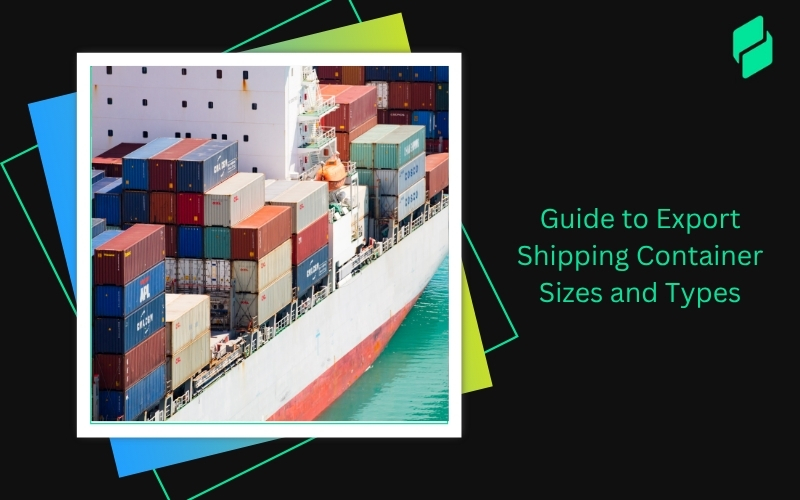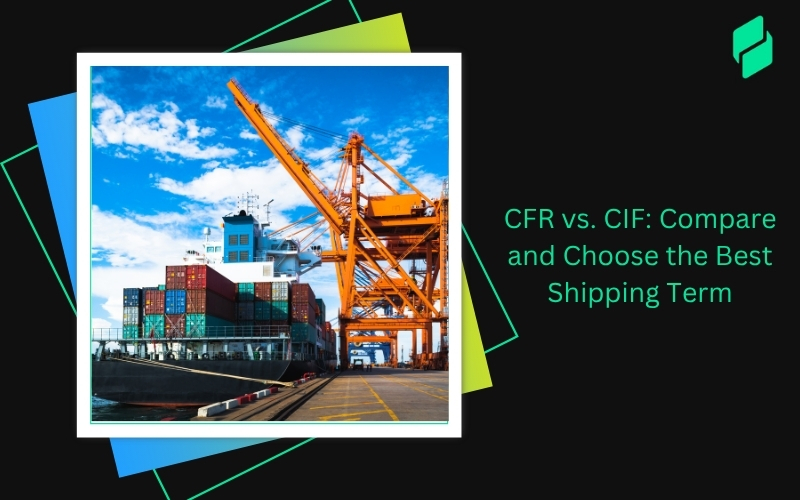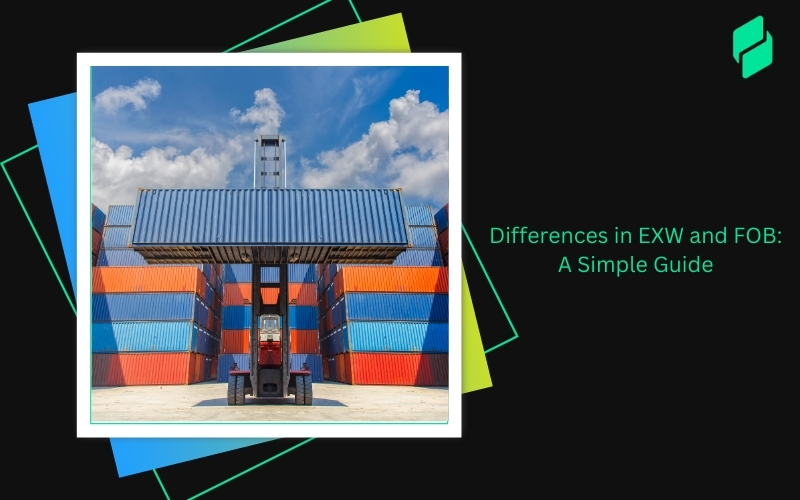Optimize your business: use unlimited savings with Pazago fulfilled now!
Get Started ->Imagine buying your favorite gadget online, only to discover it costs more than you expected due to additional charges. These extra costs include tariffs. But what exactly are tariffs, and why do they matter in international trade?
What is a Tariff?
A tariff is a tax imposed on goods crossing national boundaries. It can apply to imports and exports but is most commonly associated with imported goods.
When a country imposes a tariff on an imported item, the cost of that item increases, making it more expensive for consumers.
Objectives of Tariff In International Trade
The primary objectives of imposing tariffs are twofold. Firstly, they serve as a crucial source of revenue for governments. This revenue is essential for funding various public services and infrastructure projects that, in turn, support the economy.
Secondly, tariffs protect nascent or struggling domestic industries from foreign competitors. By making imported goods more expensive, tariffs encourage consumers to buy locally, foster domestic business, and preserve jobs.
Also Read: Understanding Freight Charges and Costs [2024 Guide]
Types of Tariff in International Trade
Understanding the different types of tariffs can help you navigate the complexities of international trade.
Here’s a simple table outlining the main types of tariffs with examples:
Also Read: Understanding ISPS Charges and Security Code in Shipping
Effects of Tariffs
Let's dive into the effects of tariffs on international trade and see how they might affect you.
1. Protective Duties: Boosting Domestic Production
One significant effect of tariffs is the encouragement of domestic production. Protective duties are designed to make imported goods more expensive, thus encouraging local businesses to produce similar items.
For example, if your country imposes a high tariff on imported cars, it might increase domestic car manufacturing investment. This shift not only boosts local industries but also creates jobs and fosters economic growth within the country.
2. Revenue Tariffs: Generating Government Income
While protective duties aim to shield domestic industries, revenue tariffs focus on generating income for the government. These tariffs are applied without necessarily protecting local businesses.
Think of them as a way for governments to earn money from international trade without significantly altering the market dynamics. For instance, a revenue tariff on luxury goods like high-end electronics can fill state coffers without pushing consumers to buy locally-made alternatives.
3. Impact on Consumer Prices: Higher Costs for Goods
Tariffs can also directly affect your wallet. When tariffs are imposed, the cost of importing goods rises. This increase is often passed on to you, the consumer, leading to higher prices for specific products.
Imagine the price of your favorite imported cheese rising because of a new tariff. This price hike can make everyday items more expensive and reduce your purchasing power.
4. Retaliatory Measures: Sparking Trade Conflicts
Tariffs affect more than just your local market; they can also stir up international trade conflicts. When one country imposes tariffs, others might retaliate by introducing their own.
This tit-for-tat escalation can lead to trade wars, disrupt global trade relationships, and impact supply chains and logistics. For businesses involved in import and export, this means navigating a more complex and uncertain market.
Higher costs for goods due to tariffs can directly affect your bottom line. Pazago's trade fulfillment services offer a streamlined approach to managing these costs efficiently, ensuring your business stays competitive.
Also Read: Understanding Customs Clearance Fees and Procedures in India
How Tariffs Shape Global Commerce?
Ever wondered how a simple policy change can ripple across the globe, affecting everything from your morning coffee to the price of electronics? Tariffs in international trade have that power.
Let’s explore how these taxes influence global trade, supply chains, and international relations.
Restriction on Trade Volume
Tariffs can significantly restrict the volume of trade between countries. When tariffs make imports more expensive, the volume of goods traded decreases. This reduction can disrupt global supply chains, leading to increased commodity prices.
For instance, a significant steel exporter facing high tariffs may reduce its exports, raising steel prices worldwide. This increase can affect industries that rely on steel, from construction to automotive manufacturing.
Influence on Trade Agreements
Tariffs are often at the heart of trade negotiations. Whether it’s a bilateral agreement between two countries or a multilateral pact involving several nations, tariffs are a central point of discussion. Countries negotiate tariffs to protect their interests while fostering trade relations.
For example, in recent trade talks between the US and China, tariffs were a central sticking point, influencing the terms and success of the agreement. Understanding these dynamics can help you anticipate changes in the international trade landscape.
Role of Differential Exchange Rates and International Cartels
Exchange rates and international cartels also play a crucial role in shaping the effects of trade tariffs. Differential exchange rates can amplify or mitigate the impact of tariffs. For instance, if a country’s currency depreciates significantly, it can offset the cost of tariffs by making exports cheaper.
On the other hand, international cartels, which are groups of producers that agree to control production and prices, can influence how tariffs affect global markets. For example, OPEC’s control over oil production can shape the global impact of tariffs on oil imports and exports.
Staying informed on trade agreement dynamics is crucial, and Pazago's platform keeps you ahead with the latest news and analyses, ensuring your business remains competitive.
Also Read: Understanding ACD Charges in Shipping
Calculation and Evasion of Tariff in International Trade
Ever wondered how customs determine the amount you owe when importing goods? Calculating tariffs can be complex but mainly revolves around the ad valorem method.
Let’s break down how this works and explore the tactics some use to avoid these costs.
Methods of Customs Duty Calculation
The primary method for calculating customs duties is ad valorem, which means "according to value." This method bases the tariff on the value of the goods being imported. Here’s how it typically works:
- Harmonized System (HS) Code: Every product has a specific HS code, which is an international nomenclature for the classification of products. This code helps customs officials identify the product and determine the applicable tariff rate.
- Declared Value: You must declare the value of the goods being imported. This value includes the cost of the goods, insurance, and freight (CIF). Customs officials use this declared value to calculate the duty.
- Tariff Rate: The applicable tariff rate for the HS code is applied to the declared value. For instance, if you’re importing electronics valued at $1,000 and the tariff rate is 10%, you’ll owe $100 in tariffs.
Strategies for Avoiding Tariffs
While paying tariffs is a legal obligation, some businesses attempt to avoid them through various strategies. These tactics can have significant impacts on trade and enforcement.
- Under-Invoicing: This involves declaring a lower value for the goods than their actual worth. By doing so, importers pay less in tariffs. However, this is illegal and can result in severe penalties if discovered.
- Misclassification: Some importers misclassify goods under HS codes with lower tariff rates. For example, luxury goods can be labeled as basic items to reduce tariff costs. This practice is also illegal and subject to strict penalties.
- Transshipment: This strategy involves routing goods through countries with lower tariffs before reaching the final destination. By doing so, importers can reduce the total tariff costs. While not illegal, this method can be seen as unethical and lead to stricter customs checks.
- Using Free Trade Zones: Some countries offer free trade zones where goods can be imported, processed, and re-exported without paying tariffs. Utilizing these zones can significantly reduce businesses' costs.
Impact on Trade and Enforcement
Avoiding tariffs can have far-reaching consequences on international trade and enforcement:
- Distorted Trade Data: When goods are under-invoiced or misclassified, trade data becomes inaccurate, making it difficult for governments to make informed policy decisions.
- Increased Enforcement: To combat tariff evasion, customs authorities may increase inspections and enforcement actions, leading to delays and higher costs for compliant businesses.
- Trade Tensions: Strategies like transshipment can lead to trade tensions between countries, as they might perceive these tactics as unfair trade practices.
Calculating tariffs accurately is key to cost-efficiency. Use Pazago’s Portal for hassle-free management of your trades, including accurately determining tariffs on your imports or exports.
Also Read: Understanding Demurrage Charges in Shipping and Their Impact on Importers
Economic Analysis and Opinions on Tariff in International Trade
Ever found yourself paying more for an imported product and wondered why? The answer often lies in tariffs, those pesky taxes on international trade. But beyond your wallet, how do tariffs impact the broader economy?
Let’s dive into the economic analysis and varying opinions on this contentious topic.
The General Consensus: Tariffs and Economic Growth
Most economists agree that tariffs generally have a negative impact on economic growth and consumer welfare. When tariffs are imposed, the cost of imported goods rises, leading to higher consumer prices. This increase can reduce your purchasing power, making everyday items more expensive.
Additionally, businesses that rely on imported materials may face higher production costs, increasing product and service prices. Over time, these effects can stifle economic growth, reduce efficiency, and hinder international trade.
Theoretical Benefits vs. Practical Limitations
While the consensus is negative, some argue that tariffs can be beneficial under certain conditions. This is where the concept of optimal tariffs comes in.
Theoretically, optimal tariffs can protect nascent industries or counteract other countries' unfair trade practices. For example, a government might impose tariffs on imported solar panels to support its fledgling solar industry.
However, in practice, their limitations often overshadow the benefits of optimal tariffs. Implementing and enforcing these tariffs can be complex and costly.
Moreover, other countries might retaliate, leading to trade wars that can harm global economic stability. The practical challenges of determining tariffs' “optimal” level often make this theoretical benefit hard to achieve.
Tariffs as a Political Tool
Tariffs aren’t just about economics but also a powerful political tool. Historically, countries have used tariffs to pursue economic independence or respond to global financial conditions.
For instance, during the Great Depression, many countries raised tariffs to protect their economies from collapsing international markets. More recently, tariffs have been used in trade disputes, such as the trade war between the US and China, where tariffs were employed to gain leverage in negotiations and address trade imbalances.
Understanding the broader economic implications of tariffs and how they affect international trade can be complex. Pazago offers access to the latest global news, policies, and trade events, empowering you to make informed decisions and adapt strategies effectively.
Also Read: Navigating GST on Export of Services: A Practical Guide for Indian Businesses
Conclusion
Tariffs will continue to play a crucial role in the ever-evolving world of international trade. By keeping up-to-date with the latest developments and understanding their implications, you can navigate the complexities of global commerce more effectively.
Engaging with the topic of tariffs in international trade equips you with the insights needed to manage costs, optimize supply chains, and ensure your business thrives in a competitive global market.
Remember, knowledge is not just power in the world of trade; it's a vital resource for success.


.png)








